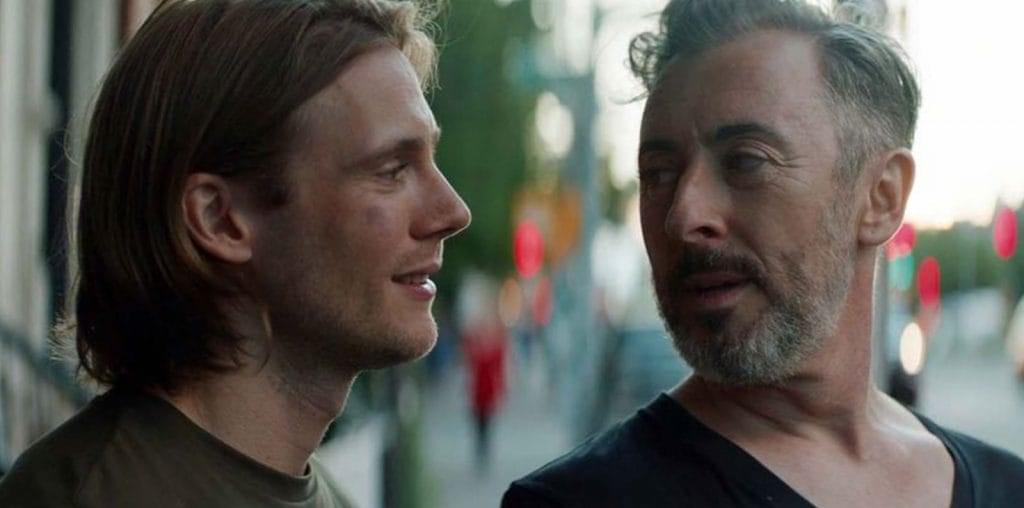
SPOILER ALERT!
Canadian Classicks is a look at some of the gems and turds from the so-called “tax shelter period,” when the Canadian government introduced new tax laws in an effort to boost domestic film production.
If last week’s choice, “Rituals,” represented one of the best examples of Canadian horror filmmaking, while this week’s choice is easily one of the worst (and that is saying something): 1987’s “Rock ‘n’ Roll Nightmare.”
Also known as “The Edge of Hell,” “Rock ‘n’ Roll Nightmare” is an astoundingly not scary demon possession film, clearly inspired by the low budget success of “The Evil Dead,” but without any of the atmosphere or talent displayed in that film. Pretty much everything about it is bad – the writing, the acting, the sound, the cinematography, the editing, the effects… It truly reaches Ed Wood style levels of ineptitude, and yet it still has a charm about it that makes it moderately watchable. And it is worth watching, if only for the guffaw-inducing finale. But more on that later.
Director John Fasano had befriended producers Roberta Findlay and Robert Sear (“Tenement,” “Snuff”) in New York, where he worked for them as a poster artist and writer. Through them Fasano met Jack Bravman, a porno director looking to direct his very own horror movie. Having heard of Fasano’s work on a script clean up for Findlay and Sear, Bravman asked Fasano to write a script and apparently also offered him a chance to co-direct the film, although uncredited. The result was “Zombie Nightmare” starring Jon Mikl Thor, Adam West, and a very young Tia Carrera.
After a deal between Leonard Shapiro of Shapiro Entertainment and Findlay and Sear fell through, Fasano approached Shapiro about financing another low budget horror film, which he himself would direct. A deal was reached whereby Shaprio would give Fasano $50,000 to make the film, on the condition that it was shot in 35mm, had a marketable soundtrack, and featured no less than 8 naked breasts. Shapiro and Fasano would then split the profits 50/50.
Instead of raising the other $50,000 to complete the budget, Fasano opted to write, produce, direct, and edit the film himself for free. A Long Island, NY native, Fasano knew from his experience on “Zombie Nightmare” that shooting in Canada would allow him to further maximize his meager budget and Thor, the former bodybuilder who had also starred in “Zombie Nightmare” and was involved in the Vancouver metal scene, was called upon to star and provide the soundtrack for half of what Shapiro had put up. Thor is also credited with having written and produced the film; the first credit is apparently not true and was listed to ensure that the film met the required quota of Canadians in key positions necessary to guarantee the tax credit which had helped to finance the film.
Initially scheduled to shoot over seven days, the film ended up being shot in five when the cinematographer had to leave to grieve over the death of his guru. The plot concerns a rock band called The Tritonz who hole up in a farm house in Canada in order to record their new album, but find themselves being picked off one by one by the evil demon creatures who were already living there. The film features relatively little gore and only 6 boobies by my count, as well as endless scenes of people entering and exiting rooms in single file. A very uneven sound mix means that jarring heavy metal songs actually appear over the supposedly atmospheric “score” and much of the incredibly stupid dialogue is almost inaudible.
The film opens with an idyllic scene of a suburban housewife happily baking in her kitchen when she is suddenly snatched by a rubber demon hand. When the hoser father goes to look for her he is assaulted by a unconvincing rubber skeleton that pops out of the oven. We are then subjected to a very long credit sequence that appropriates the low moving “shaky-cam” of “The Evil Dead,” only this time with the shadow of the boom mike clearly visible. The length of this sequence is rivaled only the next, which involves the Tritonz’s van driving up a Canadian highway from multiple angles for what seems like forever.
Finally arriving at the farmhouse, the members of the band and their assorted wives/girlfriends/whatever pile out and we get to know a little bit about them. Stig (Jim Cirile) is the drummer and his accent is so bad it is honestly unclear whether is was meant to be English, Australian or just plain weird. This is of little consequence, however, because it disappears all together about 3/4 of the way into the film. His girlfriend, Lou Anne (Jillian Peri), is obviously meant to be the “Yoko” of the group and is the proprietor of four of the six boobies that are displayed. Roger Eburt (har har, Frank Dietz) is the guitarist and Mary (Liane Abe) is his brand new wife, a fact which neither of them seem able to shut up about. Max (David Lane) and Dee Dee (Denise Dicandia) are both in the band and in a surprisingly sweet scene later in the film they are finally allowed to reveal their true feeling for each other. Right before they become demon fodder. Dee Dee is also prone to wearing leotards and demonstrating how cold the converted barn recording studio is. The band’s manager, Phil, does not appear in the credits and is supposed to be some sort of smooth operator, but his Duckie hairdo and hat make him look more like an ineffectual dork. Lastly we have John Triton (Thor), the lead singer and only person who seems to take being in the band seriously, and Randy (Teresa Simpson), his one true woman.
A bunch of rather boring stuff happens, punctuated by the occasional glimpse of a cute and altogether non-threatening one-eyed rubber hand puppets. There are not one but two whole songs performed in their entirety. At some point a bunch of groupies show up and Phil gets to give them a lecture on the evils of the hard rock lifestyle. Thor and Randy share what is meant to be a touching and passionate shower love-scene which ends up being pornoriffic, complete with close-up tongue waggling. This scene also seems interminable.
One could very well ask themselves why, for the love of God, they would sit through all of this poorly acted, poorly paced silliness, and the reason, my friends, is Thor’s climatic battle with Satan. Yes, that’s right – Thor gets to fight old Beelzebub himself. Not only that, but it turns out the whole “band” thing was just a ploy to lure out the King of Lies: none of those people actually existed. They were “shadows” created by Thor, who it turns out is actually an archangel called “The Intercessor.” All of this is revealed through a confrontation in a bar where Randy transforms into a wobbly Satan puppet and a rather unfazed Thor reveals his true form, which involves teased hair, a cape, and a studded leather thong. The final battle, although it seems rather misleading to describe it as such, involves wobbly Satan throwing rubber starfishes at Thor, which he then has to pretend are attacking him. He also manages to rip one in half, which takes about a minute. Then Thor and the wobbly Satan puppet dance in a circle with their arms around each other for about four minutes before Satan disappears in the blaze of a couple of road flares, because springing for actual fireworks clearly would have blown the film’s budget.
Despite all this, the film still managed to net something close to $400,000 in sales for Shapiro.
For fans of bad film, “Rock ‘n’ Roll” Nightmare is definitely worth a look, but just know that the film’s 3.4 rating on IMDb is well earned. And despite the – as Callum Vatnsdal described it in his book, They Came From Within: A History of Canadian Horror films – “all embracing badness” of the movie, there is an earnestness in the unpretentious nature of the film that feels very Canadian and comforting. While far from being a conventionally good actor, Thor does make for a compelling lead who at least seems to be trying harder than the rest of the cast. Also, his wardrobe is downright awe inspiring. The film has already amassed enough of a cult following to spawn a direct to DVD sequel 2005, also starring Thor. It is currently rated 2.4 on IMDb.
Next week: Sci-Fi, Canadian style: Cube.

